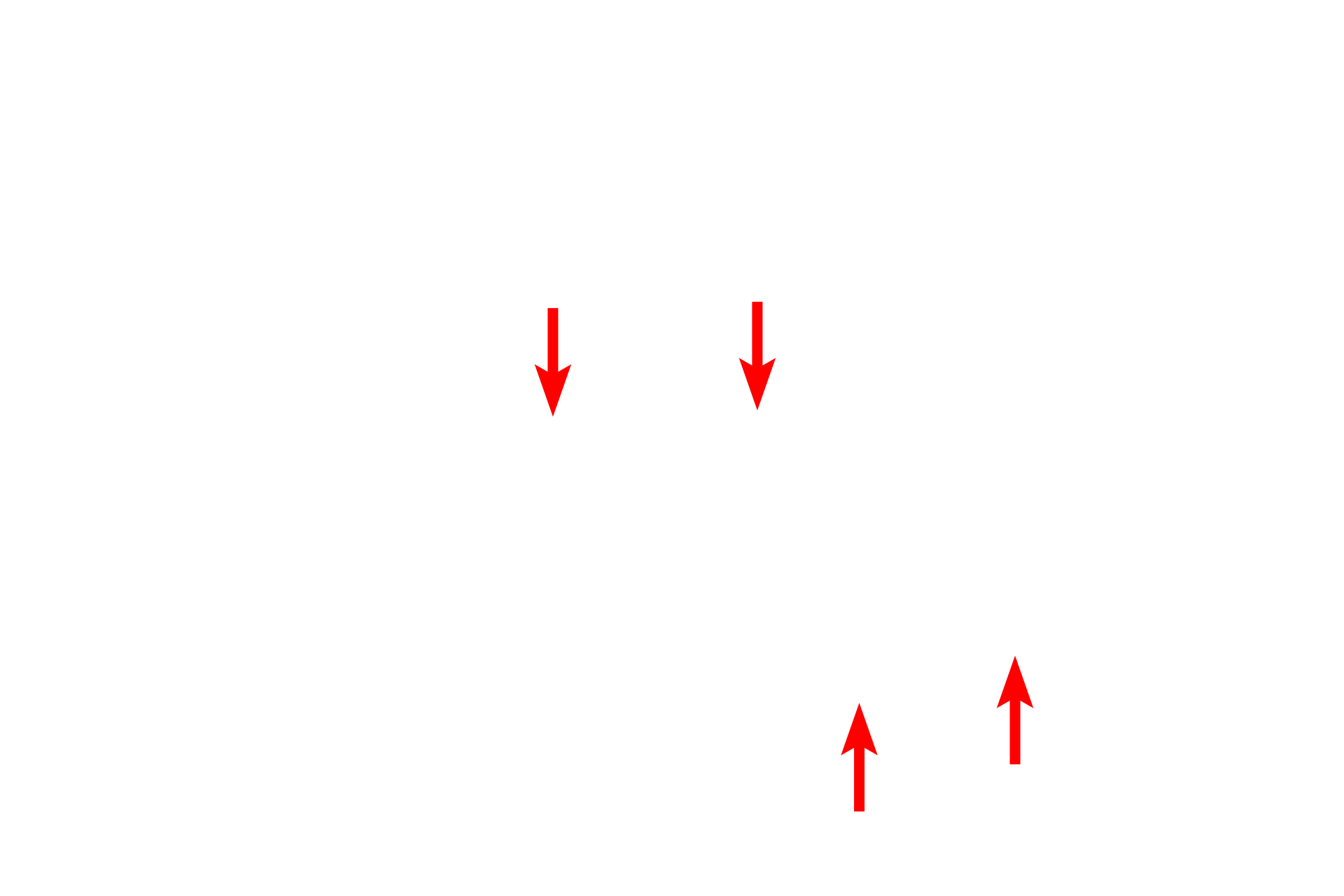
Macrophage
The macrophage nucleus has a prominent indentation, reflective of its origin from monocytes. The accumulations of heterochromatin are mostly located just beneath the nuclear envelope, a distribution referred to as marginated. Prominent folding and ruffling of the processes is also typically seen. Numerous heterogeneous lysosomes are also visible. 7000x

Nuclear indentation
The macrophage nucleus has a prominent indentation, reflective of its origin from monocytes. The accumulations of heterochromatin are mostly located just beneath the nuclear envelope, a distribution referred to as marginated. Prominent folding and ruffling of the processes is also typically seen. Numerous heterogeneous lysosomes are also visible. 7000x

Marginal heterochromatin
The macrophage nucleus has a prominent indentation, reflective of its origin from monocytes. The accumulations of heterochromatin are mostly located just beneath the nuclear envelope, a distribution referred to as marginated. Prominent folding and ruffling of the processes is also typically seen. Numerous heterogeneous lysosomes are also visible. 7000x

Folds and processes
The macrophage nucleus has a prominent indentation, reflective of its origin from monocytes. The accumulations of heterochromatin are mostly located just beneath the nuclear envelope, a distribution referred to as marginated. Prominent folding and ruffling of the processes is also typically seen. Numerous heterogeneous lysosomes are also visible. 7000x

Lysosomes
The macrophage nucleus has a prominent indentation, reflective of its origin from monocytes. The accumulations of heterochromatin are mostly located just beneath the nuclear envelope, a distribution referred to as marginated. Prominent folding and ruffling of the processes is also typically seen. Numerous heterogeneous lysosomes are also visible. 7000x